Managers are Burnt Out Too. Here’s How to Combat Burnout in Leadership.
Last Updated Nov 13, 2025

Key Takeaways
- Leadership burnout is a widespread and growing problem that affects every level of management. Many leaders operate under relentless pressure, struggle with emotional fatigue, and internalize unrealistic expectations that drain their motivation. This chronic strain shapes their energy, influences their decision-making, and affects the culture they oversee.
- Unmanageable workloads and cultural expectations create conditions that exhaust leaders over time. Many managers navigate expanding responsibilities, constant availability, and limited space for vulnerability. These pressures accumulate quietly and steadily until emotional and physical symptoms surface in ways that disrupt both personal wellbeing and team performance.
- Burnout reshapes how leaders think, relate, and make choices. Emotional depletion narrows their focus, reduces empathy, and pushes them into reactive patterns. These shifts impact communication, engagement, and long-term strategy, creating ripple effects that touch productivity, morale, and the broader organizational environment.
- Healthy leadership depends on systems that support emotional sustainability. Leaders need protected space for rest, practical wellness resources, and cultures that welcome honest conversation. Organizations that invest in these structures help leaders reconnect with purpose and guide teams with clarity and humanity.
- Preventing burnout requires a shift toward conscious and regenerative leadership. This approach centers human connection, shared purpose, and rhythms that allow renewal. Leaders who embrace these practices build workplaces that nurture resilience, elevate wellbeing, and sustain performance without sacrificing the people who drive it.
Leading shouldn’t mean running yourself into the ground. Yet many leaders today carry more weight than they’re willing to admit—constant pressure, complex decisions, and a level of stress that often goes unseen. This article isn’t a generic guide, nor is it aimed at those already in crisis. It’s an invitation to step off autopilot, take an honest look at yourself, and recognize that protecting your mental health is also part of leading well.
Because yes, leaders burn out too. And it’s time we talked about it. Inside, you’ll find practical strategies not just to address burnout, but to prevent it—and to make a real impact from your position of leadership.

What Is Workplace Burnout—and Why Does It Affect Leaders, Executives, and Managers Too?
For a long time, burnout was seen as a problem affecting only frontline employees—those working directly with customers, on factory floors, or in physically demanding roles.
But the reality is now clear: this syndrome—officially recognized by the World Health Organization (WHO) as a condition linked to the work environment—doesn’t discriminate by job title or organizational rank. It impacts every level of a company, including, and often especially, those in management and leadership roles.
Burnout is a form of chronic emotional fatigue that arises when workplace demands significantly outweigh the personal resources available to meet them. It shows up as deep exhaustion, growing disengagement from work, a sense of lost purpose, and even a cynical attitude toward one’s own responsibilities.
For leaders, this is particularly concerning. They’re expected to project unshakable strength, be constantly available, and make tough decisions. Unlike individual contributors, managers and executives do more than meet their own goals—they’re also responsible for guiding their teams, upholding company culture, and carrying the weight of organizational outcomes. This creates a constant emotional strain that often goes unacknowledged.
The problem? The higher up someone is in the hierarchy, the less “permission” they tend to feel they have to show vulnerability. As a result, many managers and directors experience burnout in silence, running on autopilot and emotionally disconnecting from their work. This disconnection doesn’t just harm their own well-being—it also affects their entire team’s workplace experience.
What’s even more concerning is that, in many cases, these leaders may not even recognize what’s happening to them.
Statistics Show that Leadership Burnout is Growing in the United States
Depending on the survey and level of seniority, between one‑third and three‑quarters of U.S. leaders now report being “often” or “always” burned out, with mid‑level and first‑line managers showing the steepest increases since 2020.
Key drivers are unmanageable workloads, role conflict, perceived lack of organizational support, and an expanding scope of responsibility (now 51 % above capacity for many managers).
Consequences include record CEO turnover, sliding employee engagement, and a willingness among 70 % of C‑suite executives to walk away for a role that better protects their wellbeing.
- Prevalence by Leadership Tier
| Management Level | Burnout Rate |
|---|---|
| Managers | 47% of managers felt burned out in LinkedIn’s 2024 Workforce Confidence Survey (vs. 42 % of individual contributors, 38 % of directors). |
| C‑suite executives | 71 % “often” or “always” feel exhausted or stressed; 66 % would switch employer for better wellbeing. Nearly 70 % of executives were already considering quitting for a role supporting their health in 2022. |
| CEOs | U.S. firms recorded 1,914 CEO exits in 2023, a record high spike partly due to post‑pandemic burnout. |
- Trends and Directional Indicators
| Trend | Key Statistic |
|---|---|
| Manager engagement slide | Global employee engagement fell from 23 % to 21 % in 2024; managers showed the sharpest drop, with Gallup citing burnout as a principal cause. |
| Responsibility creep | U.S. managers are handling 51 % more responsibilities than they can reasonably manage in 2024. |
| Employer–employee perception gap | Employers rate their workplace’s mental‑health environment 22 percentage points better than employees do. |
| Costly intent to leave | Burnout drives 59 % of workers, 66 % of managers, 71 % of the C‑suite to consider leaving for a more supportive employer. |
| CEO churn | Post‑pandemic CEO exits reached the highest level on record in 2023, with executive outplacement experts citing burnout as a material factor. |
- Top Burnout Causes According to Leaders Themselves
| Cause | Illustrative Metric |
|---|---|
| Unmanageable workload / hours | Work overload blamed in 68 % of burnout cases among IT leaders’ teams. |
| Role conflict & “middle squeeze” | Managers must mediate senior demands while coaching teams; this sandwich pressure is one reason nearly half of managers report burnout. |
| Toxic workplace behaviors | Eliminating toxic behaviors could cut burnout symptoms by up to 60 %, per McKinsey’s multivariable model of workplace factors. |
| Lack of clarity & recognition | Unfair treatment, unclear expectations, lack of support, and unreasonable time pressure as the top five antecedents of manager burnout. |
| Moral distress (healthcare) | 83 % of physicians say inability to address social determinants of healthfeeds burnout; 87 % want more time to do so. |
- Organizational Consequences
| Organizational Dynamic | Burnout Impact |
|---|---|
| Productivity & engagement | Each 10 % rise in manager burnout correlates with a roughly 5 % drop in team engagement in Gallup’s multi‑year panel analyses. |
| Turnover costs (healthcare example) | Burnout‑related turnover costs the U.S. health system is about $9 B (nurses) and $2.6‑6.3 B (physicians) annually. |
| Reputation & ESG | Eight in 10 executives believe failing to advance “human sustainability” will hurt talent attraction and profitability. |
| Financial Performance | 58% of CEOs strongly agree that employee wellbeing is critical to their organization's financial success. |
Why Do Leaders Rarely Admit They’re Burned Out?
There’s a deeply rooted—and distinctly cultural—reason why many leaders don’t talk about their burnout: the belief that showing vulnerability puts their professional standing at risk. In highly competitive workplaces where the myth of the “infallible leader” still prevails, admitting you’re tired, demotivated, or in need of help is often seen as a sign of weakness.
Many executives feel their role demands that they be the backbone of their teams. And while their influence is undoubtedly essential, no backbone is indestructible. Still, the fear of breaking down in front of their teams, of losing authority, or of being perceived as incompetent leads countless leaders to hide their struggles. They learn to smile through exhaustion, keep things moving, and press on without asking for help.
This fear is compounded by another major obstacle: the lack of safe spaces to talk about burnout. Who can a manager confide in when they’ve reached their limit? Who checks in on them when they’re always the one checking in on everyone else? In many organizations, there are neither protocols nor supportive environments that allow leaders to say, “I need a break,” without worrying about career consequences.
57% of managers wish somebody had warned them not to take their current job, and 46% are considering quitting within the next year due to overwhelming workloads. — study by UKG
The most concerning part of this silence? It doesn’t just harm the leader—it directly affects their teams. Burnout spreads, affecting the entire corporate ecosystem. A burned-out manager is more likely to make reactive decisions, communicate with less empathy, and lose connection with the team’s shared purpose. This creates tense work environments, demotivates employees, and fuels higher turnover rates.
That's why breaking the silence isn’t just an individual act of bravery—it’s a strategic necessity. And that change starts by acknowledging a key truth: taking care of your leaders is a deliberate, strategic decision for safeguarding both the health and performance of your entire organization.
Signs of Burnout in Managers, Executives, and Leaders
Burnout in leadership roles can be especially difficult to recognize—not because the signs aren’t there, but because they’re often hidden behind packed schedules, professional achievements, and a strong sense of responsibility. A leader experiencing burnout doesn’t stop showing up to work or make immediately visible mistakes. In fact, many continue performing their roles with apparent normalcy even as each day feels increasingly difficult. This kind of depletion seeps into their daily life, coloring everything: the energy they wake up with, their engagement in meetings, the tone of their emails, and how they lead their teams.
This isn’t ordinary tiredness. It’s a deep, pervasive fatigue that no amount of sleep or weekend break can fix. And in many cases, they aren’t getting either.
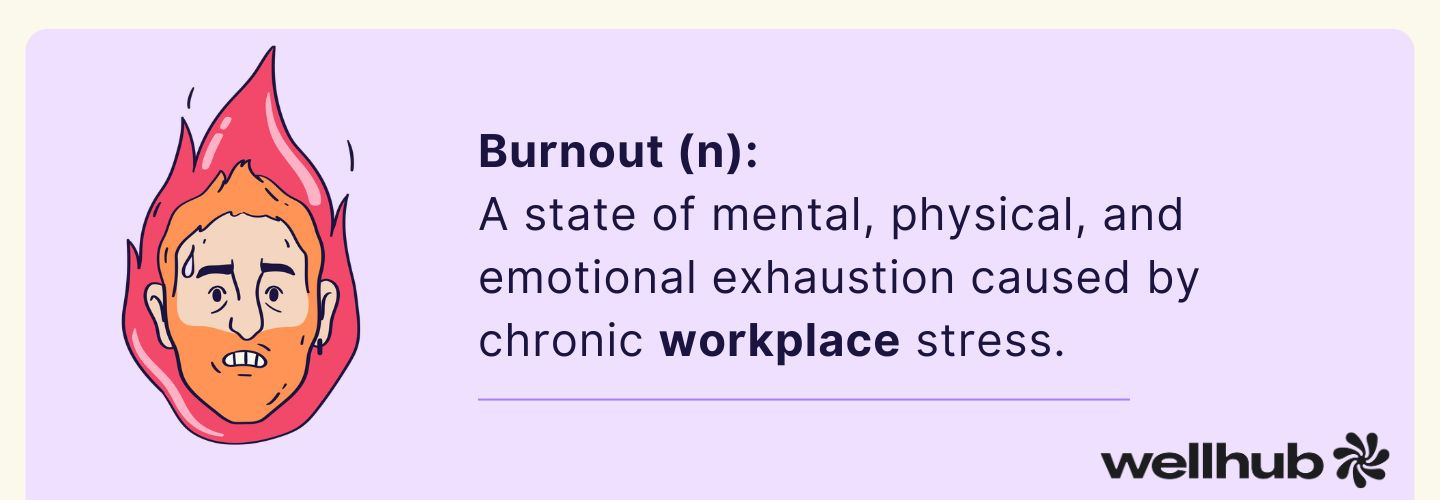
In mid- and senior-level leaders, burnout often manifests as emotional disconnection. Tasks that once felt meaningful now seem pointless. What used to motivate them now feels like an exhausting obligation. Thoughts like “Nothing I do is enough,” “I can’t afford to fail,” or “I don’t have the energy for this anymore” begin to surface—but they’re repressed, as leaders often feel there’s no space to express them. Tasks get completed on autopilot, but creativity, enthusiasm, and drive fade.
And this disconnection doesn’t stop at work: it spills over into personal life. Leaders facing burnout may become more withdrawn at home, more irritable with loved ones, and less emotionally available to those closest to them, highlighting the critical need for stronger self-care and emotional intelligence skills.
Spot burnout—22 signs to look for before it’s too late.
The Emotional and Physical Warning Signs Leaders Often Hide
One of the biggest challenges of identifying burnout in leadership is that its most severe signs often get overlooked—or brushed off as just “part of the job.” Sleep disruptions, for example, are common. A manager might stay up later and later, wake up repeatedly throughout the night, or open their eyes at 1 a.m., 3 a.m., and 5 a.m. with their mind racing through to-do lists without recognizing that their body is pleading for rest.
This is often accompanied by persistent physical symptoms: muscle tension, headaches, gastrointestinal issues, high blood pressure, and more. But these signs tend to be dismissed as the “normal stress” of running a team or company.
35% of senior leaders experience work-related stress frequently or constantly. For 42%, the top cause of this stress is their own self-imposed pressure.
— Study by UKG
Emotionally, the signs are just as clear, though much quieter. Leaders may find themselves losing patience more easily, overreacting to minor mistakes, or doubting their own abilities despite years of experience and achievements. Rather than recognizing these as symptoms of burnout, many interpret them as personal weaknesses. This pushes leaders to work even harder, push past their limits, delay vacations, and convince themselves things will improve with time. But they don’t—because burnout isn’t something that resolves on its own.
Left unaddressed, this cycle harms more than the leader. It can also negatively affect the company’s employer brand and workplace culture.
These emotional and physical warning signs are rarely shared openly. Leaders feel compelled to maintain a façade of strength, control, and stability. No one wants to appear like they’re losing direction in front of their team. And so, burnout is endured silently. It becomes normalized, tolerated, and carried until it becomes unsustainable.
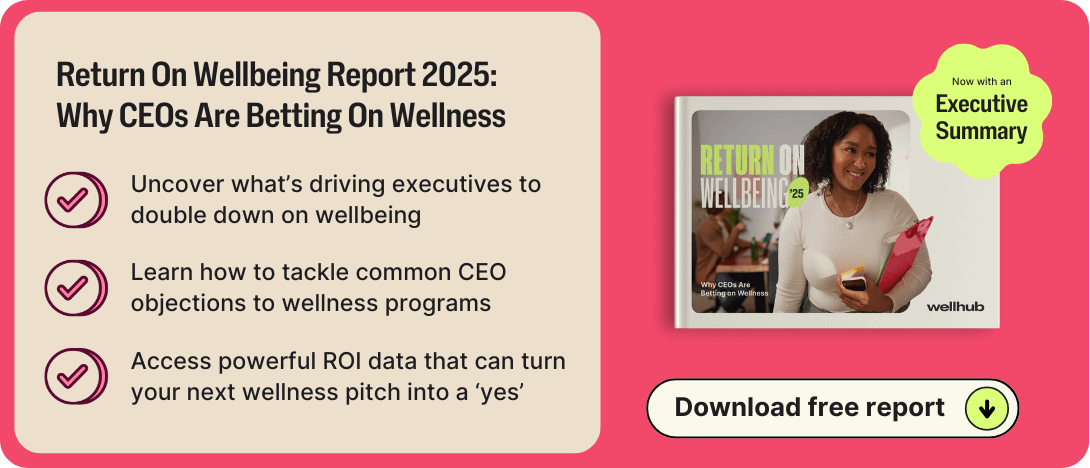
How Burnout Impacts Decision-Making and Leadership
When a leader is burned out, their entire decision-making system is compromised even if, from the outside, it seems like business as usual. Their thinking becomes more rigid, less analytical, and more prone to shortcuts or reactive choices based on urgency rather than strategy. What once was effective leadership shifts into survival mode. A burned-out manager stops focusing on growing the business or empowering the team and instead concentrates on simply making it through the day without breaking down. Over time, this survival mentality erodes results, increases errors, and exposes cracks in the company’s culture.
1 in 5 C-level leaders admit they’re “often” or “always” feeling cynical, irritable, and burned out at work
— Study by UKG
Empathy—an essential trait in human-centered leadership—also fades. A leader drained by emotional exhaustion may appear distant, less receptive to team concerns, and more easily irritated by demands.
This isn’t because they’ve stopped caring. It’s because they no longer have the internal resources to support anyone else. They’re emotionally depleted. Slowly, this strains relationships with the team, erodes trust, damages communication, and fosters a climate of tension and disengagement.
Burnout also undermines long-term vision. Leaders in burnout can’t think strategically because their focus narrows to what’s immediately in front of them: putting out fires and surviving the day. Innovation stalls. Opportunities are missed. Leadership, which should inspire and drive forward momentum, becomes reactive and defensive. Teams notice this shift. They may not articulate it, but they feel it—and that loss of direction impacts results, team morale, and collective growth potential.
That’s why addressing burnout in managers and executives goes beyond individual well-being—it’s a matter of organizational sustainability. When leadership breaks down, the entire company is at risk. Investing in leader well-being strategies isn’t just a nice-to-have—it’s a critical business decision.
Key Causes of Burnout in Leadership Roles
The silent exhaustion many leaders experience rarely stems from a single source. Burnout in leadership positions typically results from the constant accumulation of unresolved tension, excessive demands, lack of clear boundaries, and organizational cultures that still glorify overwork and nonstop productivity.
Unlike other roles, leadership isn’t just about managing processes or hitting targets. It also involves shouldering the pressure of delivering results, absorbing the emotional strain of the team, responding to the expectations of clients and stakeholders, and navigating pressures from other departments or leadership levels. This burden, though often invisible, is heavy. It doesn’t show up on reports or KPI dashboards, but leaders feel it every day.
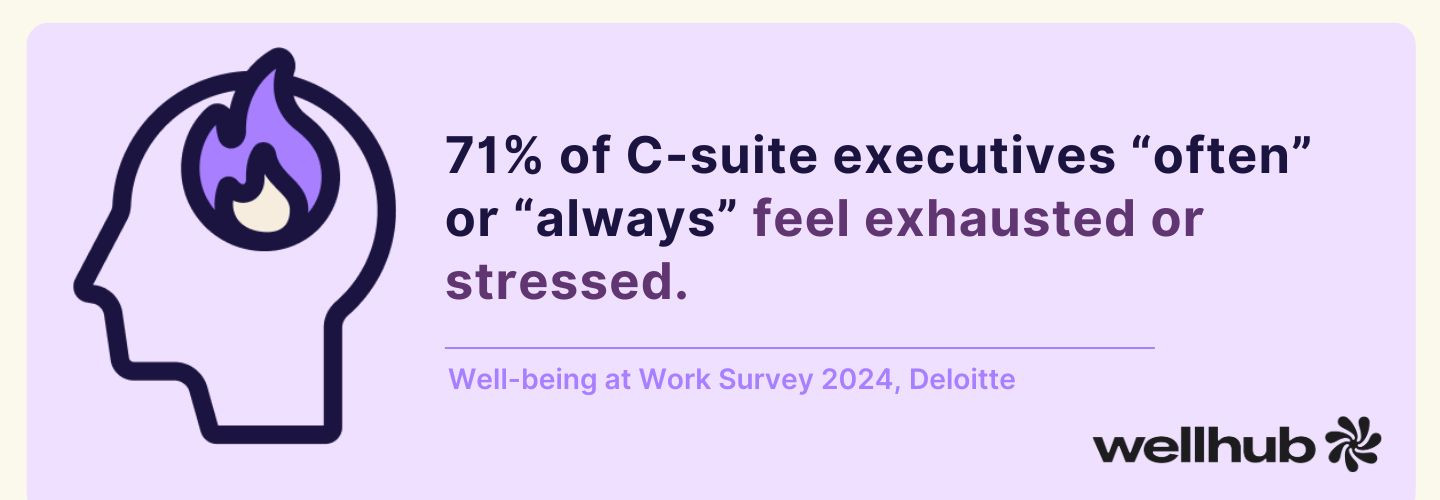
This kind of exhaustion doesn’t arrive suddenly. It builds slowly through small, repeated sacrifices: ever-increasing targets, back-to-back schedules with no recovery time, tough decisions made without reflection or rest. Over time, both body and mind start sending warning signs. But instead of addressing them, many leaders suppress—or even celebrate—them. After all, for years, corporate culture has fed the myth of the invulnerable leader: someone who can handle anything, without limits or breaks.
Understanding the deeper causes of executive burnout is critical—not just for prevention, but to create workplaces where leading doesn’t have to mean sacrificing personal well-being in the name of performance. To do this, organizations need to confront and address the structural and cultural factors that sustain this cycle of exhaustion.
Here are some of the leading contributors to burnout in leadership roles:
Always-On High-Performance Culture
In many organizations across the United States, a cultural mindset still prevails: overworking is equated with professional value. The leader who works the longest hours, responds the fastest, stays constantly available, skips vacations, and is the first to arrive and last to leave is often seen as the model employee.
But behind that “heroic” image lies an uncomfortable truth: this model is fundamentally unsustainable.
A culture of constant high performance doesn’t promote efficiency—it drives self-exploitation. Many leaders have internalized the belief that their worth is tied to always being present, solving every problem, and avoiding mistakes at all costs. This self-imposed pressure is further amplified by a common challenge among executives: the fear of delegating. Not necessarily because they don’t trust their teams, but due to a combination of perfectionism, external pressure, and long-held beliefs like: “If I want it done right, I have to do it myself.”
Fear of Delegating
Delegating isn’t just about assigning tasks. It’s about consciously and strategically releasing control. But doing that requires time, patience, team development—and, critically, an organizational culture that supports it. In environments where everything feels urgent, mistakes are penalized, and leadership is judged on short-term metrics, delegating becomes a meticulous and often draining process. As a result, many leaders end up carrying far more than they should. Not because they refuse to let go, but because the system has taught them that doing so could jeopardize results.
This combination—constant self-pressure and difficulty sharing the weight of leadership—is a perfect recipe for burnout. While it may seem efficient in the short term, it ultimately drains leaders’ capacity to sustain themselves and to lead their teams with health, clarity, and purpose.
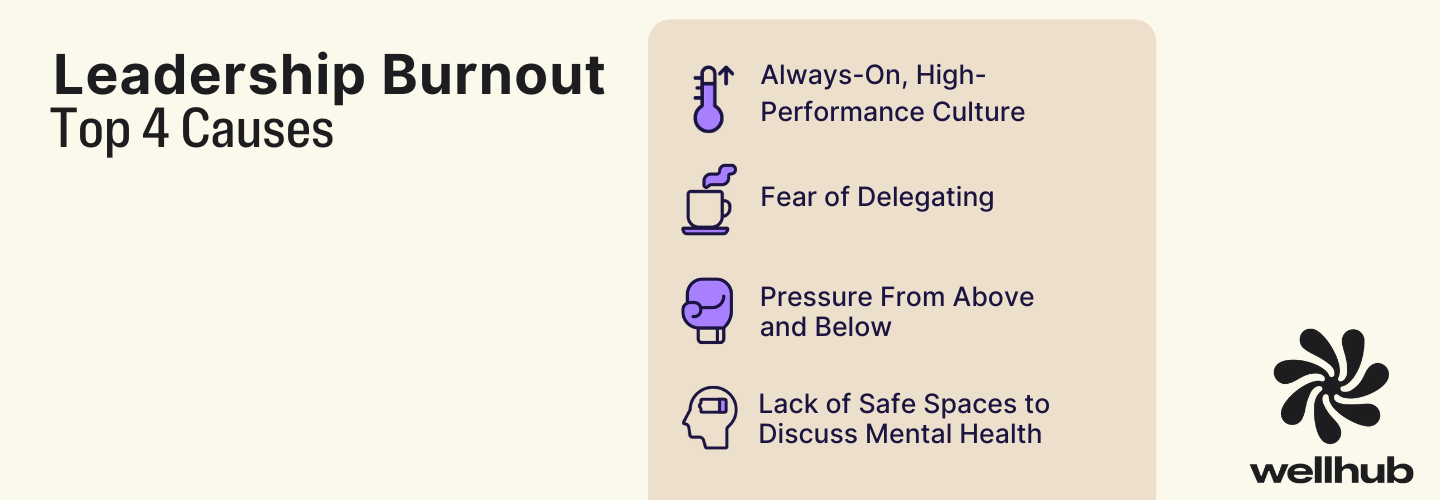
Emotional Overload from Top-Down and Bottom-Up Pressure
One of the most overlooked aspects of leadership is the emotional burden of occupying the space between two worlds: on one side, senior executives; on the other, frontline teams. Managers and mid-level leaders sit squarely in the middle of these forces, acting as the convergence point for expectations, pressures, and demands coming from both directions.
Welcome to sandwich pressure. From above, they’re expected to deliver results, justify decisions, hit ambitious targets, adapt to strategic shifts, and answer for their team’s performance. From below, they’re responsible for supporting their people: motivating their teams, resolving conflicts, managing emotions, listening to frustrations, and creating the conditions for others to succeed and drive value.
This two-way pressure creates a constant state of emotional saturation. Leaders become a kind of emotional shock absorber: everything hits them. They’re required to manage data and processes—but also emotions, expectations, and human tension. People feel, demand, expect, and get frustrated. Leadership, then, requires not just logic and planning, but empathy, intuition, and emotional sensitivity.
Which raises an unavoidable question: Who supports the one holding everyone else together? Where does the person who spends their day solving others’ problems go to process their own emotions?
This emotional overload doesn’t always get verbalized—but it shows up in everyday moments: coming home with no energy to engage with family, craving complete silence, feeling overwhelmed by even minor additional stimuli. And because safe spaces to talk about this without fear of seeming “weak” rarely exist, many leaders feel their only option is to power through—at the cost of their own well-being.
The problem isn’t feeling pressure—that’s an inherent part of leadership. The real problem is lacking spaces to process, release, and recover from that pressure. Without those outlets, the strain doesn’t dissipate; it accumulates. And over time, it turns into chronic emotional fatigue that quietly depletes leaders’ mental health.
The Lack of Safe Spaces to Talk About Mental Health
One of the most profound—and least visible—causes of burnout in senior leadership is emotional isolation. Many leaders feel they have nowhere to turn when they’re vulnerable. Traditional organizational cultures aren’t designed for those at the top to admit they’re exhausted, overwhelmed, discouraged, or nearing collapse. There are no protocols, no designated spaces, and no dedicated support systems for them. Only silence.
In many companies, conversations about mental health are still seen as uncomfortable, secondary, or even irrelevant compared to the “real business priorities.” And while recent years have seen progress toward recognizing the importance of emotional well-being, most of these initiatives are aimed at frontline and administrative staff. Mindfulness programs, active breaks, resilience workshops, and psychological support services are typically positioned as benefits “for employees”—but rarely designed specifically for leaders. And when such resources do exist, they’re often underused: asking for help is still perceived as a risk to professional reputation.
This lack of safe, human, and empathetic spaces for leaders to express how they really feel creates deep internal disconnection. Leaders begin to live a double reality: outwardly projecting confidence, decisiveness, and control, while internally carrying suppressed emotions, lingering doubts, and a growing sense of loneliness.
This disconnect isn’t just unfair—it’s dangerous. It prevents early intervention, normalizes distress, and reinforces the false belief that struggling is a personal failure.
Mental health conversations at the leadership level shouldn’t be taboo. They should be a strategic priority. Because a leader who is emotionally supported doesn’t just feel better—they lead better, make better decisions, and foster healthier, more sustainable workplaces for everyone.
According to aHarvard Analysis, Managers Experiencing Chronic Stress and Workplace Burnout Reported:
- Facing repetitive or prolonged stressful situations
- Handling overwhelming workloads
- Being promised significant success—but under conditions that made it nearly impossible to achieve
- Feeling “attacked” or penalized when they spoke up about their situation
- Experiencing intense negative emotions, including sadness, fear, despair, compassion, helplessness, shame, and anger
- Feeling trapped in a cycle of inadequacy, often accompanied by guilt
- Believing their role had little to no meaningful impact
- Questioning the point of their work, as if they had lost sight of its purpose
How Managers, Executives, and Leaders Can Address and Overcome Burnout
Recovering from burnout isn’t quick or simple,but it is possible.
For leaders, the first step often isn’t taking action, but recognizing the problem itself: admitting that burnout is real and deserves attention. Asking for help isn’t a sign of weakness—it’s a sign of clarity. It’s understanding that leadership requires care too, that no level of performance can be sustained indefinitely without consequences, and that well-being can’t be reduced to a few days off or an occasional motivational talk.
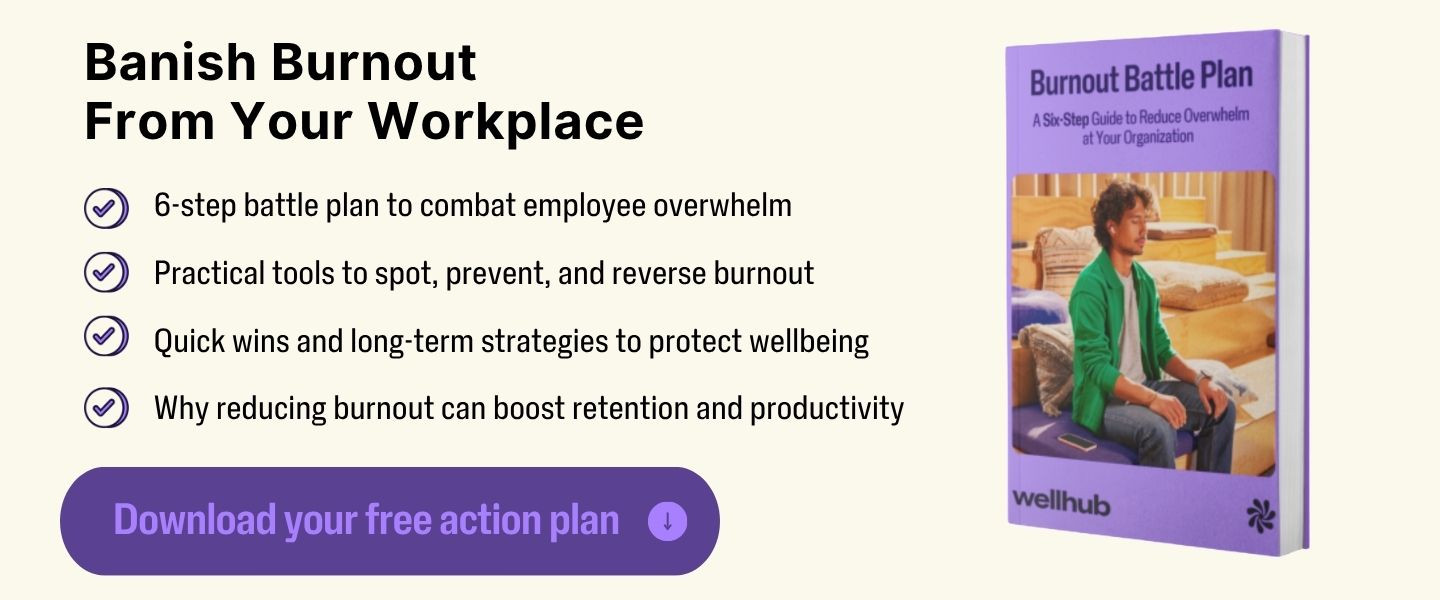
Overcoming burnout goes far beyond taking a break. It requires a deep reset in how a leader relates to themselves, their team, and their organization. It’s about learning to let go of what isn’t yours to carry, listening to your body instead of silencing it, and building consistent practices of both self-care and collective care. It’s not about taking a temporary pause—it’s about transformation: returning to your leadership role with purpose, with health, and with a renewed understanding that your personal well-being directly affects the health of the entire organization.
To make this transformation real and sustainable, action is needed on three levels:
- Individual Level – Focus on personal awareness, self-care, and emotional regulation.
- Relational Level – Redesign leadership practices to foster healthier, more empathetic connections with your team.
- Structural Level – Drive organizational changes that support leaders, so their well-being doesn’t depend solely on personal resilience, but on a system that supports, listens to, and values them.
Personal Strategies for Emotional and Physical Self-Care
The first step toward change starts at the individual level. Burnt out leaders need to realize self-care isn’t a luxury or an indulgence—it’s a vital necessity, especially considering their high-responsibility roles. A leader who neglects their own well-being often, unintentionally, reinforces a culture of burnout that negatively affects their entire team. That’s why it’s essential to rebuild your relationship with your body, your emotions, your time, and your energy.
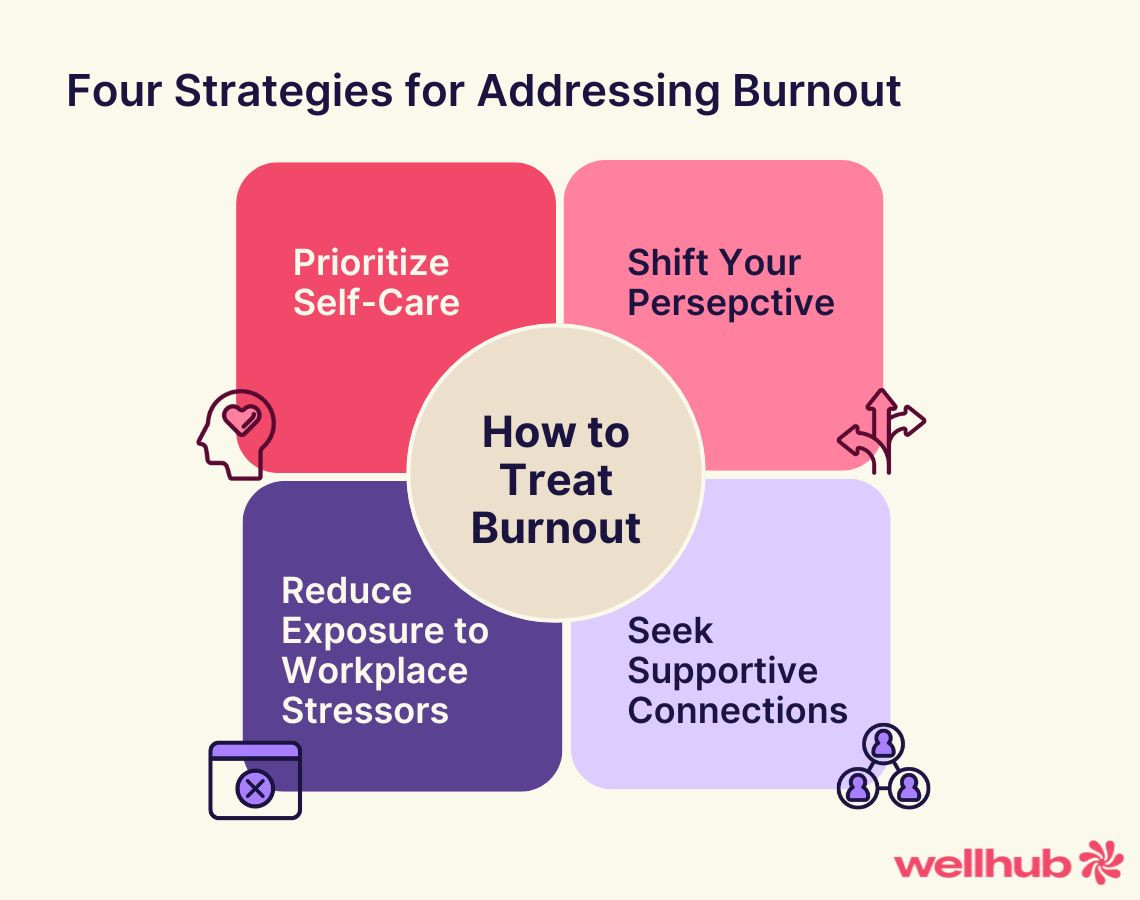
Emotional Self-Care
Emotional self-care begins with giving yourself permission to feel. Acknowledge your exhaustion. Accept frustration. Stop demanding that you feel “fine” all the time. Validating your emotions doesn’t take you off track—it helps you find your focus again. It’s about learning to recognize your own internal warning signs before your body forces you to stop.
It also means knowing when to ask for help: confiding in someone you trust, starting therapy, or simply admitting that you can’t do everything—and realizing you don’t have to.
Physical Self-Care
Caring for your body is just as important as caring for your mind. Fuel yourself with nourishing food, prioritize quality sleep, move your body regularly, and slow down long enough to breathe consciously. Often, the body sends out warning signals before the mind catches up—but many leaders ignore them, pushing forward for the sake of deadlines, targets, and daily urgencies, until there’s no capacity left.
Establishing simple, non-negotiable routines—even the smallest habits—can completely change how you move through the day. You don’t have to overhaul your entire lifestyle overnight. The goal is to build sustainable habits that restore your energy and help you feel present in your body—without pain, without resistance.
A leader who takes care of themselves doesn’t just perform better—they lead better. They connect more empathetically, make clearer decisions, and help foster healthier, more sustainable workplace cultures.
Because taking care of yourself isn’t selfish. It’s conscious leadership.
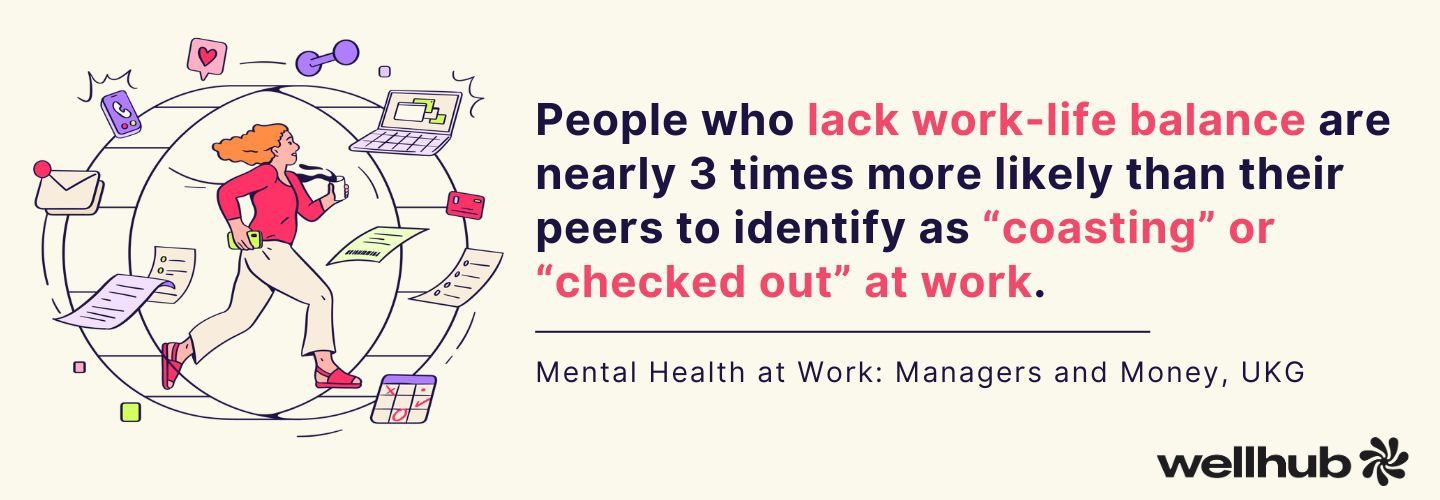
Team Management Techniques That Help Reduce Pressure
A burned-out leader often ends up with a tense, exhausted, or emotionally disconnected team. Not by choice, but because the pressure-driven management style caused by burnout tends to cascade downward. That’s why addressing burnout isn’t just about supporting the leader—it’s also about rethinking the management dynamics that perpetuate the overload. Transforming leadership style is an essential part of the solution.
Redistribute Power and Responsibility
One of the most effective ways to relieve pressure is to consciously redistribute power and responsibilities. Delegating doesn’t mean losing control—it means expanding your team’s capacity. Delegation is an act of trust, development, and empowerment. When leaders delegate clearly and grant true autonomy, they free up their own time and energy while fostering their team’s growth and strengthening collective engagement.
By contrast, micromanagement is a burnout trap. It drains resources, breeds mistrust, and accelerates burnout at every level.
Set Clear Boundaries and Shared Priorities
In many organizations, everything feels urgent because priorities aren’t clearly defined. When everything is important and every task falls on the same few shoulders, burnout is inevitable. Leaders have both the responsibility and the authority to break this cycle, working smarter, not harder.
This involves opening uncomfortable conversations: about overwhelming workloads, unrealistic expectations, and goals that ignore the team’s well-being. But boundaries can’t just be discussed—they must be enforced, even when doing so feels uncomfortable.
Revalue Communication and Psychological Safety
Finally, effective leaders must recenter communication. Teams that feel heard, that can express emotions safely, and that have spaces of psychological trust are inherently more resilient. And that resilience supports the leader in return.
When your team is well, leadership feels lighter, more collaborative, and more sustainable. Pressure stops being a mountain the leader must climb alone—and instead becomes a shared effort.
Corporate Wellness Programs Designed for Leaders
Many workplace wellness initiatives focus primarily on frontline and operational teams—and that’s important. But when leaders are left out, the impact is incomplete and, in some cases, even contradictory. You can’t ask a manager to care for their team if no one is caring for them. That’s why leadership well-being needs to be central to any serious organizational mental health strategy.

Tailoring Wellness Programs for Leaders
Designing effective wellness programs for leaders starts with one key recognition: their needs are different. A generic meditation workshop won’t help if a manager feels that stepping away for an hour could compromise their performance or availability. Strategies aimed at leadership must account for their unique context—their workload, their fears, their constraints. Solutions need to be practical, accessible, and confidential, including:
- Executive coaching with a focus on personal wellbeing
- Access to specialized psychological support
- Planned and protected rest periods
- Peer support networks for sharing experiences without judgment
Institutionalizing Self-Care
Organizations must move beyond simply “allowing” leaders to care for themselves—they need to actively promote and institutionalize it. Self-care should be built into the strategic wellness plan, not treated as optional. Taking a week off shouldn’t feel like a career risk; it should be seen as a long-term investment in leadership sustainability. Talking about emotions shouldn’t remain taboo—it should become part of company culture. Wellness shouldn’t be buried in the fine print; it should be reflected in your KPIs.
The Ripple Effect of Leadership Wellbeing
The impact of these initiatives is profound. A supported leader leads better. They think more clearly, make stronger decisions, listen with greater empathy, and build healthier connections. When leaders feel supported, they’re able to support others more effectively.
In this way, mental health stops being an individual burden—and becomes a collective responsibility. Because an organization that takes care of its leaders is, at its core, an organization that’s taking care of itself.
The Role of Healthy Leadership in Preventing Burnout
In many organizations, efforts to address burnout focus on managing symptoms—often when it’s already too late. Shortened workdays, wellness breaks, or self-care campaigns may help, but these are typically reactive solutions. Real prevention starts much earlier. And one of the most powerful factors in preventing emotional exhaustion—both in teams and their leaders—is the type of leadership being practiced.
Leadership isn’t just a set of styles or methods. It’s a way of showing up in the world. Today more than ever, companies need leaders who understand that their personal health and well-being aren’t separate from their performance—they’re essential to it. Healthy leadership means taking care of yourself in order to care for others. Not out of sacrifice, but out of awareness. It’s a style of leadership that doesn’t glorify exhaustion or romanticize constant availability. It doesn’t measure loyalty in hours worked, or confuse commitment with overextension.
Leading healthily means leading with empathy, with active listening, with the ability to set boundaries and recognize when something isn’t working. Above all, it means leading from a place of humanity. And from that humanity, leaders can help build a more sustainable organizational culture—where leadership doesn’t equal burnout, and where the well-being of the team is deeply connected to the well-being of the person leading it.
Don’t let burnout take hold of your office. Here’s how to prevent burnout in your workforce.
From Traditional Boss to Conscious Leader
For decades, the dominant leadership model was that of the controlling, distant, and rigid boss—someone who gave orders, focused on immediate results, and wielded authority from the top down. That approach may have worked in industrial or strictly hierarchical environments, but today—in a world defined by complexity, agility, and diversity—it’s not just outdated; it’s often counterproductive.
Conscious leadership represents a necessary evolution. It’s a leadership style that guides without imposing, that supports as well as directs. It recognizes that a leader’s role isn’t just to hit business targets—but to create collective well-being. Sustainable performance doesn’t come from constant pressure, but from emotional connection, shared purpose, and psychological safety.
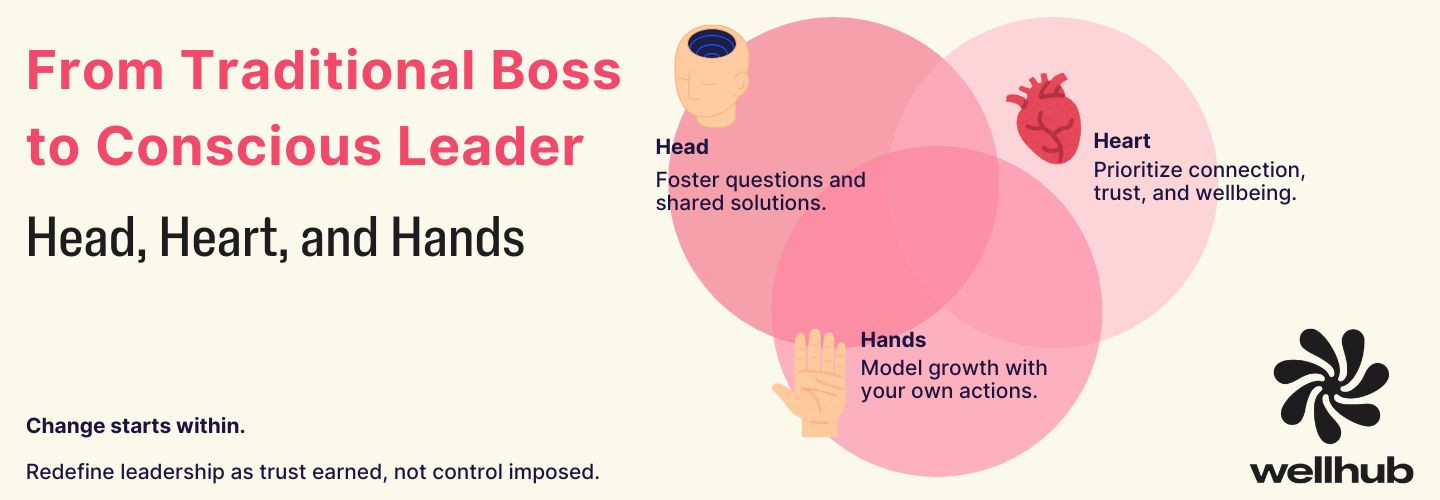
A conscious leader doesn’t have all the answers. They have the right questions—and the courage to create space for others to grow. Shifting from traditional boss to conscious leader means unlearning. It’s about letting go of beliefs like “leading means carrying everything alone,” “being constantly available proves your commitment,” or “emotions have no place at work.” It requires embracing vulnerability and redefining authority as something earned through consistency, empathy, and leading by example.
This kind of leadership doesn’t just protect against burnout—it transforms the work experience itself. Because when a leader allows themselves to be human, the entire system becomes more human.
What Is Regenerative Leadership—And Why Does It Matter?
Regenerative leadership is an emerging approach that offers a deep, systems-based vision of well-being. It focuses on creating the conditions for leaders and teams to continually renew themselves, grow with purpose, and sustain their energy and humanity over time.
Unlike traditional resilience—which focuses on enduring challenges and returning to a previous state—regenerative leadership promotes continuous renewal. It’s about transforming exhaustion into awareness, turning crises into opportunities for growth, and embracing leadership as a living practice that both nourishes and is nourished by its environment.
A regenerative leader takes care of themselves while also caring for the ecosystem they’re part of. Their leadership is grounded in principles like interdependence, emotional sustainability, active listening, and shared purpose. They understand that organizations aren’t machines—they’re living systems that need rest, rhythm, emotional nourishment, and space to flourish.

This mindset is more urgent now than ever. We’re facing a global burnout crisis: stress, anxiety, psychosomatic illness, and talent turnover are all on the rise. Productivity without purpose is leaving people empty. And leaders are on the front lines of this tension.
If we continue leading the way we always have, we won’t just lose talent—we’ll lose health, innovation, and meaning. We need leaders who understand that their role isn’t just about driving results. It’s about cultivating cultures that are alive, human, and sustainable.
How to Build a Workplace Culture That Also Supports Its Leaders
Addressing burnout at its roots requires more than individual solutions—it demands a shift in culture. It means rethinking the values, practices, and beliefs that shape how we work.
This starts with a simple but essential recognition: leaders are people too. They get tired, they doubt themselves, they feel fear, sadness, and frustration. Ignoring their humanity isn’t just unfair—it’s dangerous.
From that understanding, companies can begin integrating emotional wellbeing practices at every level, from onboarding to performance reviews. They can make wellbeing the core criterion in every business decision.
It’s also time to rethink how we define success. Not just in financial terms, but through measures of organizational health:
- Are we recognizing and celebrating leaders who nurture their teams, prevent conflict, and foster healthy relationships?
- Are we training leaders in human skills—like listening, empathy, and emotional regulation?
And perhaps most importantly:
- Are we creating real spaces for honest dialogue? Spaces where leaders can talk about their fears, ask for help, and share their experiences without fear of judgment. Because real transformation starts with honest conversation.
Burnout can be cured. Dive deep into how you can treat burnout here.
Does This Story Feel Familiar? Let’s Talk.
At Wellhub, we understand that leadership needs care too. That’s why we design comprehensive wellness programs tailored to the realities of every employee—including, of course, managers and executives.
Speak with a Wellbeing Specialist to explore how we can help you build a personalized, strategic, and sustainable wellbeing plan for your organization.
Because your health matters too. And because leading well starts with feeling well.

Company healthcare costs drop by up to 35% with Wellhub*
See how we can help you reduce your healthcare spending.
Category
Share

The Wellhub Editorial Team empowers HR leaders to support worker wellbeing. Our original research, trend analyses, and helpful how-tos provide the tools they need to improve workforce wellness in today's fast-shifting professional landscape.
Subscribe
Our weekly newsletter is your source of education and inspiration to help you create a corporate wellness program that actually matters.
Subscribe
Our weekly newsletter is your source of education and inspiration to help you create a corporate wellness program that actually matters.
You May Also Like

Corporate Wellness Trends HR Must Know for 2026 | Wellhub
See the top 2026 wellness trends shaping performance, retention, and culture—plus how HR can build a unified, ROI-driven wellbeing strategy.

Wellness Points Programs: Boost Employee Health & Engagement | Wellhub
Turn your workplace wellness strategy around with a points program that rewards healthy behavior with perks, from extra time off to gift cards.

Employee Financial Wellness Programs: Ultimate HR Guide | Wellhub
Create an effective financial wellness program that supports your employees in their financial needs, boosting productivity and retention.